The Americas' Evolving Climate Stances: A Look at Canada, Brazil, and Argentina
The nations of the Americas face a unique set of challenges and opportunities in the global effort to combat climate change. From the vast boreal forests of Canada to the critical Amazon rainforest in Brazil and the agricultural heartlands of Argentina, the region's climate narrative is a complex tapestry of political shifts, economic pressures, and ambitious policy goals. This article will explore the climate journeys of these key nations, from their initial pledges a decade ago to their current status and future plans.
ENERGY POLICY
Aadesh Aslekar
10/3/20256 min read
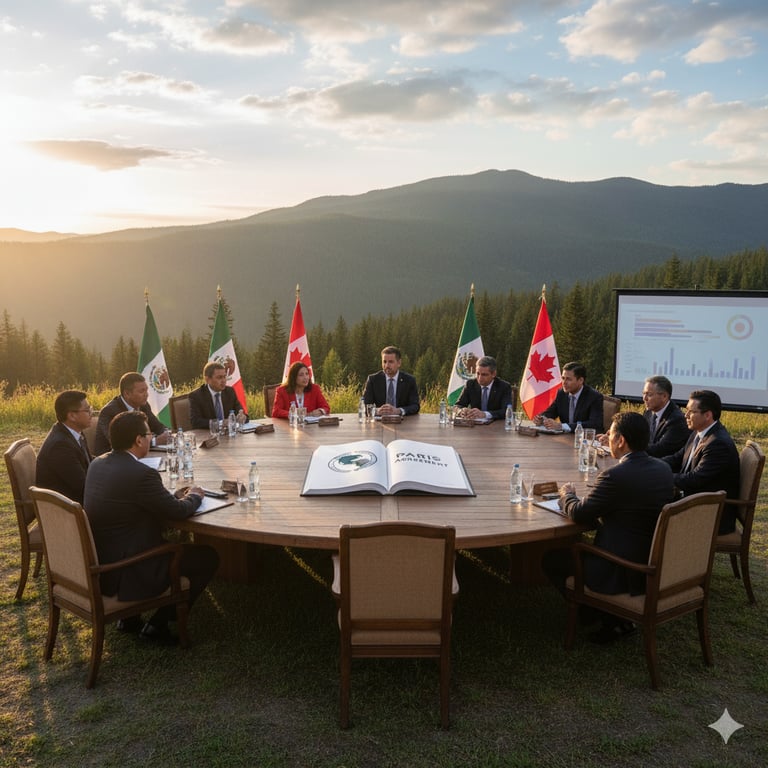

Canada: A Nation of Carbon Pricing and Progress
Canada has pursued a more consistent, but still challenging, path to emissions reduction over the last decade, relying heavily on a national carbon pricing policy.
Actions Taken (2015-2025): Since ratifying the Paris Agreement in 2016, Canada has put in place a comprehensive series of climate plans. The most significant of these is the federal carbon pricing system, which applies a charge on fossil fuels and a performance-based system for large industrial emitters. This market-based approach has been a cornerstone of Canada’s strategy, aiming to incentivize emissions reductions across the economy. Other key actions include investments in clean technology, regulations to phase out coal power, and the launch of the Canadian Net-Zero Emissions Accountability Act, which legally enshrines climate targets.
Current Status (2025): Canada has successfully "bent the emissions curve," decoupling economic growth from emissions. Its emissions are now tracking downwards, though meeting its ambitious goals remains a challenge. The government published its first Biennial Transparency Report under the Paris Agreement in 2024, providing a detailed look at its progress and projections.
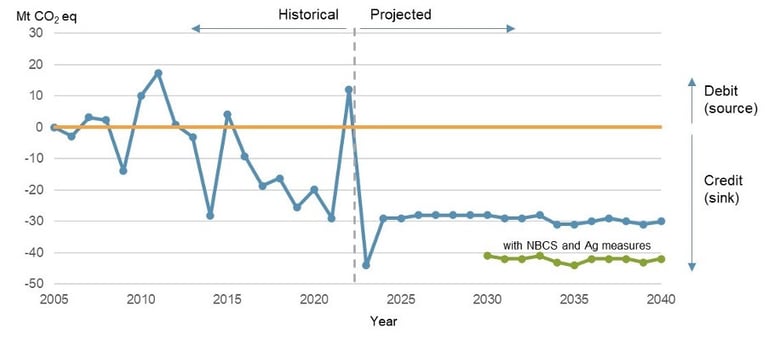

Figure - Historical and projected LULUCF accounting contribution (including reflecting the projected impact of Nature-based climate solutions (NBCS) and Agriculture measures for the period 2030 to 2040), (Mt CO2 eq)
Future Plans: Canada's current NDC commits to a 40-45% reduction below 2005 levels by 2030, with a long-term goal of net-zero emissions by 2050. Its future strategy focuses on strengthening its carbon pricing, developing clean electricity regulations, and investing in new technologies to decarbonize key sectors like oil and gas. The projected emissions are depicted in the below image.
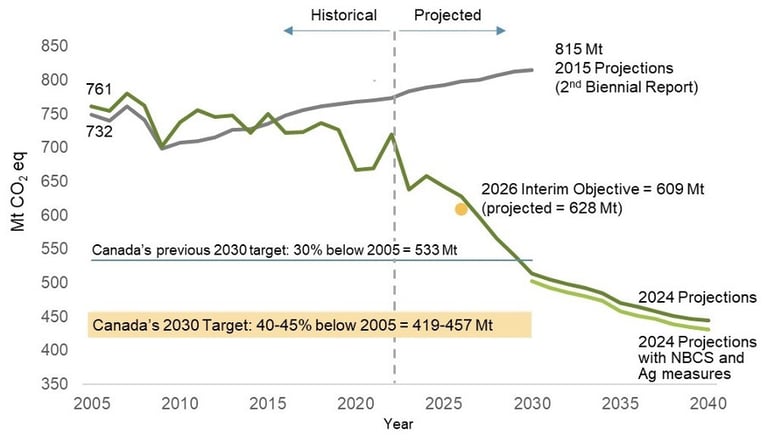

Brazil: The Amazon, Agriculture, and a Tipping Point
Brazil's climate narrative is inseparable from the fate of the Amazon rainforest, a global lifeline for climate stability.
Actions Taken (2015-2025): Under the government that signed the Paris Agreement, Brazil initially submitted an NDC committing to a 37% emissions reduction below 2005 levels by 2025. However, the subsequent administration, from 2019 to 2022, took a more ambiguous stance on environmental protection. During this period, deforestation in the Amazon and other biomes surged to record highs, driven by a weakening of environmental law enforcement. This reversal in policy drew widespread international criticism. The return of a new government in 2023 marked a dramatic shift, with a renewed and public commitment to end illegal deforestation by 2030 and to raise the ambition of the country's climate targets.
Current Status (2025): Brazil has recently submitted an updated NDC, and while its 2030 target has not significantly changed, the nation has set a new target for 2035 to reduce net greenhouse gas emissions by 59-67% below 2005 levels. The current government has made significant progress in reducing deforestation rates, though the challenge remains immense. The nation is also working on a "National Pact for Ecological Transformation" to promote sustainable development while reducing its environmental footprint. However, the continued expansion of agribusiness and the proposed development of new fossil gas capacity pose significant contradictions to these goals.
Future Plans: Brazil’s future climate strategy is now heavily focused on reversing deforestation and promoting sustainable land use, as well as on a wider energy transition. A core part of this plan is a new emphasis on multi-level governance, integrating climate action from the federal level down to states and municipalities. With Brazil set to host COP30 in 2025, the country is positioning itself to be a leader in the global climate conversation, with its success being a key determinant of whether the world can meet its long-term temperature goals. The image below shows the projected emissions.
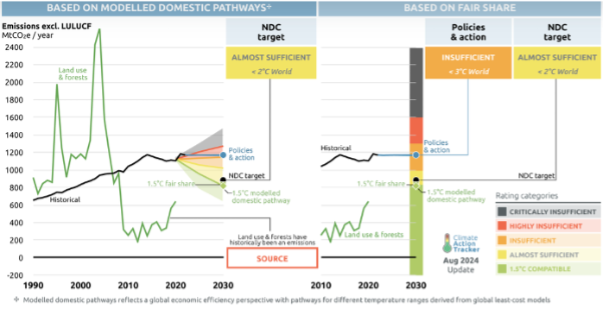

Argentina: Economic Reality and a Natural Gas Bet
Argentina's climate action is deeply influenced by its persistent economic instability and its strategic reliance on natural gas as a "transition fuel."
Actions Taken (2015-2025): Argentina has formally ratified the Paris Agreement and has submitted a series of progressively more ambitious NDCs. Its most recent commitment is to not exceed a net emission of 349 megatons of carbon dioxide equivalent by 2030. To achieve this, the country has focused on promoting energy efficiency and renewable energy, with a significant push for wind and solar power development through initiatives like the RenovAr program. The country also has ambitious targets for the sales of electric vehicles and the use of biofuels.
Current Status (2025): Despite its pledges, Argentina faces a significant internal contradiction. Under Argentina’s new government, progress in developing and implementing climate policies has taken a step backwards. While the country has potential for renewable energy, its energy mix remains highly dependent on fossil fuels, which account for over 86% of the total energy supply. The nation's economic struggles have made it difficult to secure the necessary long-term investments for a rapid transition. Furthermore, the development of the Vaca Muerta shale formation one of the world's largest shale gas reserves is a central part of the government's economic strategy. This expansion of fossil fuel production directly conflicts with its long-term decarbonization goals.
Future Plans: Argentina's future climate policy is a balancing act. It is promoting natural gas as a necessary transition fuel to phase out more polluting oil and coal while it slowly builds up its renewable energy capacity. The country's latest NDC also acknowledges the need for climate adaptation, given its high vulnerability to droughts and other extreme weather events. The government's strategy hinges on its ability to attract investment to both its fossil fuel sector (for economic stability) and its renewable energy sector (for climate goals), creating a high-stakes bet that a short-term gas-based recovery will not lock it into a high-emissions future. The image below expounds on the projected emissions.
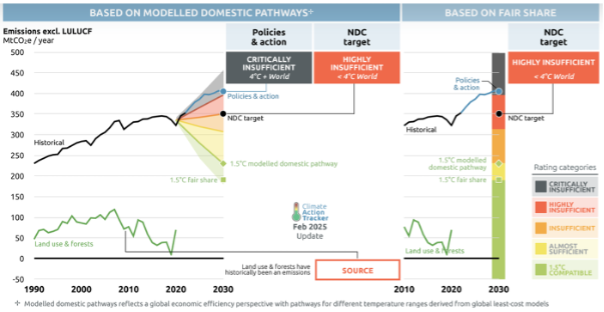

Conclusion
The climate journeys of Canada, Brazil, and Argentina illustrate the diverse paths nations are taking to fulfill their Paris Agreement commitments. While Canada has relied on market-based policies to drive a top-down reduction in emissions, Brazil and Argentina's stories highlight a more complex challenge, where the fight for a low-carbon future is deeply intertwined with economic stability, political will, and the preservation of vital natural resources. The successes and contradictions within these three nations reveal a global truth: the road to decarbonization is not linear, but rather a series of strategic choices defined by national context.
In the next part of this series, we will begin our deep dive into the specific commitments and methods of Europe’s Leadership and challenges
References:
At a glance: Canada’s international action on climate change, biodiversity loss and pollution - Canada.ca
Canada and the Kyoto Protocol - Wikipedia
Output-Based Pricing System - Canada.ca
Canada’s First Biennial Transparency Report under the Paris Agreement (2024) – Executive summary - Canada.ca
Canada's Carbon Markets: A Patchwork of Pricing Systems
Cutting pollution and building a strong economy for the future: Canada’s 2035 commitment under the Paris Agreement - Canada.ca
Brazil_Second Nationally Determined Contribution (NDC)_November2024.pdf
Brazil | Climate Action Tracker
Brazil presents its new climate target aligned with Mission 1.5ºC — Planalto
Argentina | Climate Action Tracker
What will happen if Argentina quits Paris Climate Agreement? – DW – 11/19/2024
Connect
info@energizetomorrowus.com
© 2025. All rights reserved.


